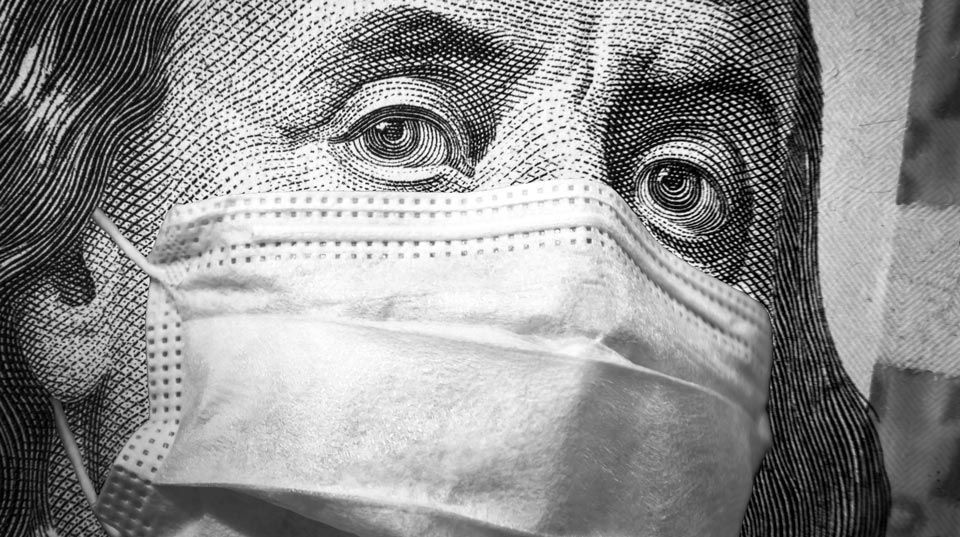On Wednesday, April 8th 2020, the Department for Health and Human Services issued guidance authorizing licensed pharmacists to order and administer COVID-19 tests.
The move was praised by the pharmacy community for federal recognition of our value and allowing us to practice at the top of our license. Kudos to the hard work our associations are making on the hill to activate pharmacists in this crisis.
However, there was one huge factor that was not addressed. Reimbursement. A footnote was added to explain:
“This guidance does not speak to or change reimbursement policy whether a licensed pharmacist may obtain reimbursement from a government or private payer for ordering or administering an FDA-authorized test.”
Bummer. But wait a second. The government assured us testing would be covered. And they authorized pharmacists to order and administer the tests. So, doesn’t that make it a covered service that pharmacists can seek reimbursement for?
Let’s, for a moment, imagine that HHS authorized pharmacists to bill Medicare directly for the Coronavirus test. Aside from what that might signal on federal provider status, let’s talk about nuts and bolts.
Read More: Front-Line Pharmacists
How Billing Works
How would pharmacists bill for coronavirus testing, or any billable service, at scale? Can anyone answer that question? Let’s look at what physicians and hospitals have in place for billing. Physicians use electronic health record (EHR) software. EHRs have many functions that allow outpatient providers to run a clinical practice — from appointment scheduling to e-prescribing to clinical decision support. But the core feature EHRs offer, and how EPIC and Cerner made their billions, is billing.
How exactly does billing work in the outpatient setting? There are two core components — documentation and claims — and a variety of other steps to consider in the billing process.
Clinical Documentation
Unfortunately, we haven’t made much progress since moving away from paper. Providers see patients and capture clinical documentation in a variety of ways: typing out a SOAP note for a new patient visit, copying & pasting the last SOAP note and making a few updates for a follow-up visit, using a voice-to-text dictation tool, dictating to a transcriptionist by phone, and if you’re real fancy, building “smart” templates that allow you to create a semi-structured progress note with some discrete data elements.
Here we are in the year 2020, and this process is still extremely tedious. It’s a huge dissatisfier across the provider community, contributes to burnout, and worst of all takes valuable time away from patient care. And that’s just the beginning.
Coding
Once the provider completes the clinical documentation, it has to be interpreted for billing. Health-systems employ armies of medical coders who read through free-text progress notes and determine how to bill for the visit. This includes determining the reason for the visit (acute symptoms, follow-up, annual wellness), complexity of the patient (conditions, co-morbidities, complexity), procedures performed (h&p, review of systems, questionnaires), procedures completed (rapid strep test, incisions) and resources used (laboratory, vaccines, medications).
Coders review several places in the medical record to interpret the visit, including the current progress note, previous progress notes, nursing notes, problem list, prescriptions, and lab orders. Once the coding specialist has a full understanding of who the patient is and what occurred during the visit, a number of billing codes are selected to include in the insurance claim.
Claims Submission
Once the appropriate codes are identified, another army of billing personnel is responsible for populating the codes into an insurance claim. The standard medical claim format is a CMS-1500 form, or electronically speaking, an 837P file. The CMS-1500 form is a physical form that can be printed, filled out by hand, and sent by physical mail. The 837P is an electronic version of the CMS-1500 form that can be populated and sent electronically to a health plan.
Thanks to billing standards, medical claims have a consistent format. The data elements required are fairly standard, including patient demographics (name, address), patient benefits information (ID, person code), provider demographics (name, NPI number), provider location information (address, city, state, ZIP), and encounter data (billed services represented by codes).
Claims are prepared by billing specialists and sent by mail or billed electronically, submitting through a clearinghouse. Clearinghouses are essentially information exchanges that connect providers to health plans to facilitate electronic billing.
Denial Management
There is no guarantee that a bill will be paid. After a claim is submitted to the clearinghouse, it’s routed to the appropriate payer who processes the claim. Claims are processed based on health plan policies — who can bill for what, how often, in what environment, etc. These policies are complex and difficult to understand and keep up with, which can often lead to a bill being denied.
Once a bill is denied, another department of people evaluate denials and determine what factors lead to denial. Sometimes it’s because an error was made when preparing the claim, sometimes the clinical documentation attached to the claim is insufficient, sometimes it’s unclear what the specific issue may be. Denials management specialists work each denial, process the changes, and resubmit the claim, hoping it can be approved.
Patient Accounting
Once a bill is either paid or denied, the final step of the process is communicating information to the patient. Yeah, that’s right, the last step. Once the process is complete and all the information is collected, an estimation of benefits (EOB) is sent to the patient, letting them know how much of the visit was covered by their insurance (adjusted for contracted rates) and how much the patient is responsible for paying.
Oftentimes a co-pay amount is collected upfront, and the remaining portion is collected after the health plan processes the claim. In some cases, claims are denied once, denied again, ultimately leaving the patient responsible for the entire amount of the visit. This is an unfortunate failure of our healthcare billing system, and it happens way more often than you think.
The Path Forward
There is a ton of effort that goes into billing. Hospitals and health-systems employ thousands of staff to manage each part of this process. Smaller provider groups may have a back office that handles billing, usually a multiple person operation. Many providers outsource all parts of the billing process to revenue cycle management companies who take a fee as a % of net billed. Some pharmacies employ technicians who specialize in billing for things like durable medical equipment (DME), compounds, and transplant medications that may be billed through the medical benefit.
Whatever the case, billing is a huge undertaking for any provider. And it’s something that pharmacists have to figure out, especially if federal provider status is ever to become a reality.
Read More: Provider Status is Inevitable
Rather than waiting for a federal mandate, states have passed provider status and even changed the insurance code to mandate payment for pharmacy services. Pioneers in Washington, Tennessee, and Texas are leading the way on the policy front. Still, pharmacist providers in those states are struggling to overcome administrative hurdles required to bill for services.
If our path forward is clinical services, we need better tools and solutions to navigate the billing process.** **And we need them fast. We are committed to solving these problems for front-line pharmacists, so they can focus on the people who need them most — patients.
**If you’d like to solve these problems with us, reach out using one of the links below. **Stay safe, stay strong, and be well.
Samm Anderegg, Pharm.D., MS CEO | DocStation
About DocStation
DocStation gets pharmacies paid for services. Pharmacies use DocStation to provide care, auto-bill medical claims, and participate in value-based programs with innovative health plans.
Get started today and discover how easy it is to get paid for the services you provide every day when you partner with DocStation.
There are several facets of billing that we didn’t cover in this article. More to come on this— stay tuned.




